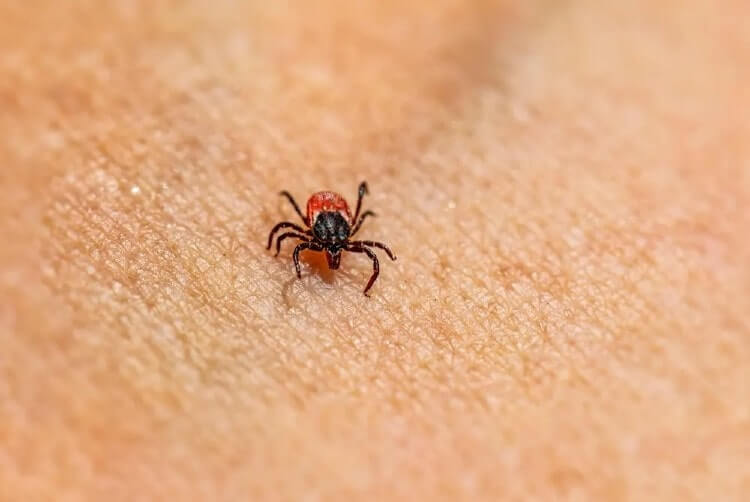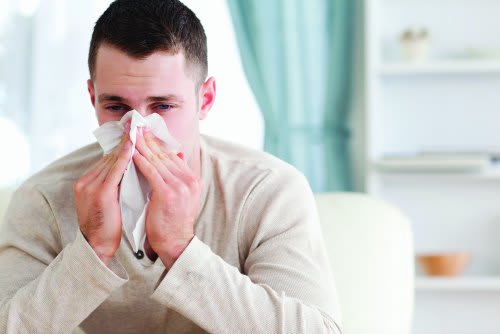What Is Rocky Mountain Spotted Fever? Local Case Brings Awareness To Tick-Borne Illness
Published: April 29, 2024l
KJ Kelly thought all he had was a nasty case of the flu. “I felt pretty bad,” the Stamford resident recalled. “I was experiencing high fevers, like 104,” she said.
After a few days of these symptoms in February, Kelly sought care at Stamford Hospital’s emergency department. He underwent in-depth physical examinations as doctors tried to determine the cause of his illness. “They're looking at your brain, your heart. I mean, it was scary,” he said.
Eventually, his medical team diagnosed him with Rocky Mountain spotted fever (RMSF), a bacterial disease spread through the bite of an infected tick that most commonly occurs in the Southeastern and Southwestern parts of the United States. RMSF rarely appears in Northeastern states like Connecticut, where only two cases are reported each year.
The disease can rapidly progress to a serious and life-threatening illness if not treated early with the right antibiotic.
If you have symptoms of RMSF, then your health care provider may recommend immediately starting treatment with doxycycline, since blood test results confirming the disease can take weeks. Doxycycline is the antibiotic that most effectively and safely treats RMSF in adults and children of all ages.
According to Dr. Asha Shah, director of infectious diseases at Stamford Health, the incidence of Rocky Mountain spotted fever is increasing across the country. The CDC estimates a rise in the number of cases of spotted fever rickettsiosis (SFR) which includes RMSF, rickettsia parkeri rickettsiosis, Pacific Coast tick fever, and rickettsialpox. In the last two decades from 495 cases in 2000, to a peak of 6,248 in 2017. Cases dropped substantially in 2020 and 2021, however, which could be related in part to the COVID-19 pandemic, the CDC said.
“Ticks like warmer weather, so if you go for a hike, it's good to check yourself and your kids for ticks. Take showers as soon as you can. Check your dogs, too,” she urged.
Kelly traced his tick bite to a local nature preserve, where he and his family had gone hiking. “Be aware that this is a risk that's present here now in the Northeast,” he said.
After a few days of these symptoms in February, Kelly sought care at Stamford Hospital’s emergency department. He underwent in-depth physical examinations as doctors tried to determine the cause of his illness. “They're looking at your brain, your heart. I mean, it was scary,” he said.
Eventually, his medical team diagnosed him with Rocky Mountain spotted fever (RMSF), a bacterial disease spread through the bite of an infected tick that most commonly occurs in the Southeastern and Southwestern parts of the United States. RMSF rarely appears in Northeastern states like Connecticut, where only two cases are reported each year.
What are symptoms of RMSF?
Most people who get sick with RMSF will have a fever, headache, and rash. The rash usually develops 2-4 days after the fever begins. The Centers for Disease Control and Prevention details other symptoms including nausea, vomiting, stomach pain, muscle pain, and lack of appetite.The disease can rapidly progress to a serious and life-threatening illness if not treated early with the right antibiotic.
If you have symptoms of RMSF, then your health care provider may recommend immediately starting treatment with doxycycline, since blood test results confirming the disease can take weeks. Doxycycline is the antibiotic that most effectively and safely treats RMSF in adults and children of all ages.
According to Dr. Asha Shah, director of infectious diseases at Stamford Health, the incidence of Rocky Mountain spotted fever is increasing across the country. The CDC estimates a rise in the number of cases of spotted fever rickettsiosis (SFR) which includes RMSF, rickettsia parkeri rickettsiosis, Pacific Coast tick fever, and rickettsialpox. In the last two decades from 495 cases in 2000, to a peak of 6,248 in 2017. Cases dropped substantially in 2020 and 2021, however, which could be related in part to the COVID-19 pandemic, the CDC said.
Tips to prevent tick-borne illnesses
No matter what part of the country you are in, you and your family should take precautions to prevent all tick-borne diseases, especially as the warm weather approaches, Shah cautioned. When hiking, it’s a good idea to:- Wear long-sleeve shirts and pants.
- Tuck pants into socks.
- Wear light-colored clothing to better spot ticks.
- Avoid walking in tall grasses where tick-infested deer and other wildlife roam.
“Ticks like warmer weather, so if you go for a hike, it's good to check yourself and your kids for ticks. Take showers as soon as you can. Check your dogs, too,” she urged.
Kelly traced his tick bite to a local nature preserve, where he and his family had gone hiking. “Be aware that this is a risk that's present here now in the Northeast,” he said.
Featured Expert/ Author
























